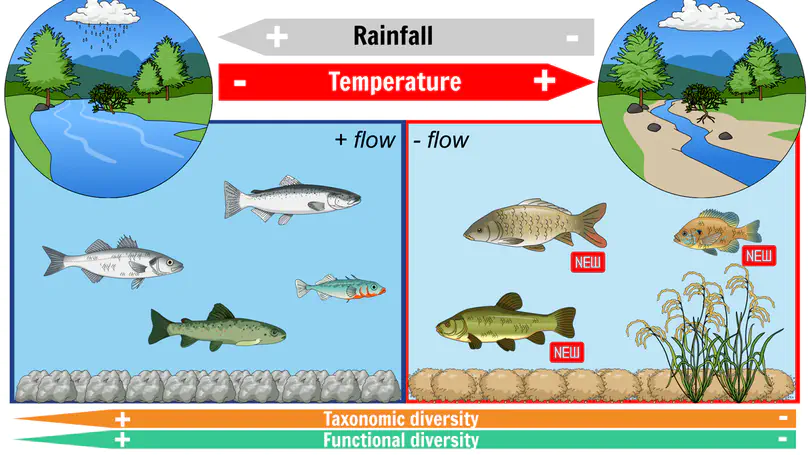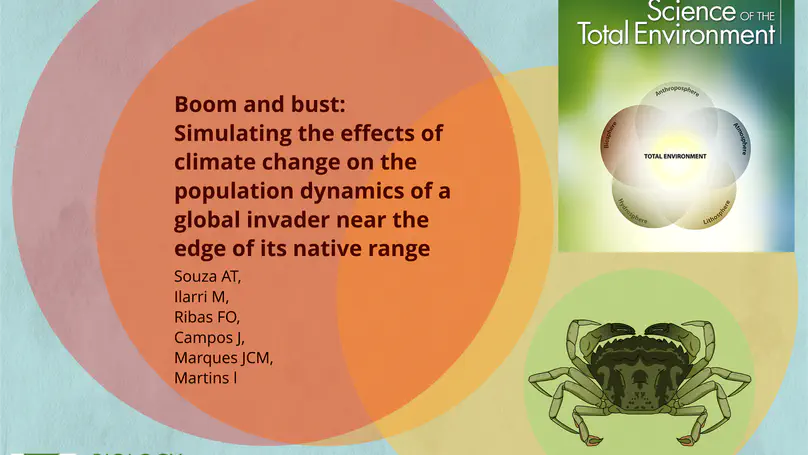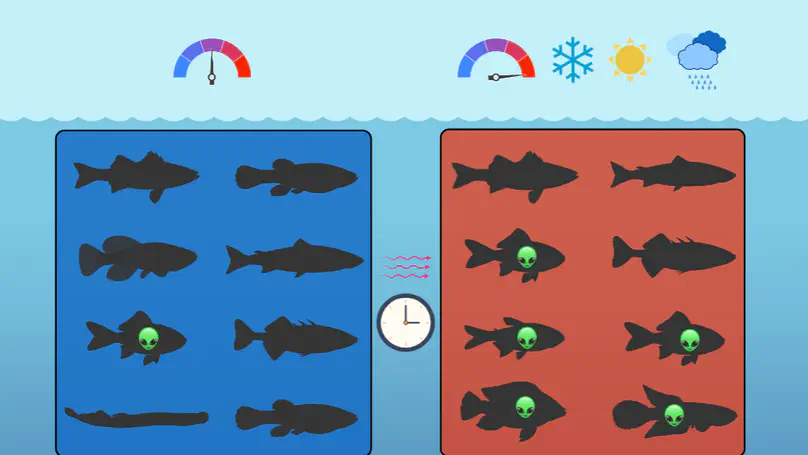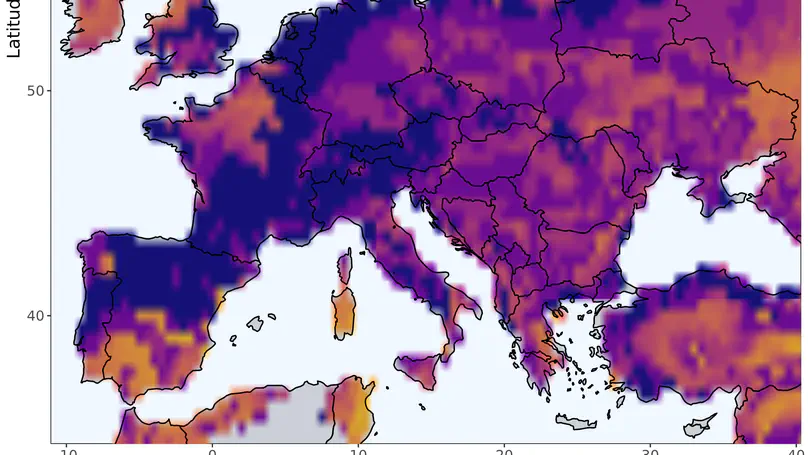Allan T. Souza
Postdoctoral researcher / Data scientist / Data steward
Institute for Atmospheric and Earth System Research INAR, Forest Sciences, Faculty of Agriculture and Forestry, University of Helsinki
Biography
Allan T. Souza is a postdoctoral researcher at the Institute for Atmospheric and Earth System Research (INAR), University of Helsinki. His research interests include the climate drivers on species distribution and population dynamics, the impacts of biological invasions on ecosystems and wildlife management. Additionally, he is heavily involved in research data stewardship, ensuring the quality, accessibility, and usability of environmental data, facilitating data-driven research and informed decision-making.
Download my short CV.
- Climate change
- Biological invasions
- Conservation
- Species distribution
- Fisheries
- Data science
- Data analysis
- Data visualization
- Data management
- Data stewardship
-
Data Steward, 2023
University of Vienna (Austria)
-
PhD in Marine and Environmental Sciences, 2013
University of Porto (Portugal)
-
MSc. in Biological Sciences - Zoology, 2007
Universidade Federal da Paraíba (Brazil)
-
BSc in Biological Sciences - Marine Biology, 2005
Universidade Federal Fluminense (Brazil)
Skills
Experience
Recent Posts
Projects
Recent events
Featured Publications

This repository hosts the information used to build the eLTER SO Costs web application. This tool is a specialized resource designed to assist the eLTER (European Long-Term Ecosystem Research) community in estimating the costs associated with upgrading and operating standard observations across various eLTER sites. The essence of this tool lies in its ability to adapt calculations based on unique site-specific criteria, ensuring tailored cost estimations. Key factors taken into consideration include the site category, the habitats, the focus spheres, and the potential co-location with other Research Infrastructures, which cover the costs of specific standard observations. The goal of this tool is to provide a user-friendly, efficient, and reliable means for the eLTER community to plan and allocate resources effectively.

The paper presents an extensive fish sampling dataset spanning a long-term period from 2010 to 2019. The data were collected in Lenta Marina, an upstream area in the Minho Estuary of the NW Iberian Peninsula, which belongs to a LTSER (Long-Term Socio-Ecological Research) platform. To capture fish, fyke nets were utilised as the sampling method and deployed at Lenta Marina. This dataset offers valuable insights into the abundance of each collected taxa recorded over time.

As the effects of climate change continue to intensify, non-native species are becoming more prevalent in estuarine ecosystems. This has implications for the taxonomic and functional diversity of fish communities. Historically, biodiversity has been a synonym of taxonomic diversity, however this approach often fails to provide accurate insights on ecosystem functioning and resilience. To better understand how climate change is impacting fishes and their traits’ composition, a long-term dataset from Minho Estuary (NW Iberian Peninsula) fish assemblage was analyzed. The results suggest that climate change and extreme weather events altered the prevailing trait modalities of fishes, which led to the overall decrease in functional diversity of the fish assemblage over the course of a decade. This decrease is associated to the loss of some trait modalities that are exclusively found in native species. On the other hand, the invasive species added novel traits associated with the conditions of high temperatures and low precipitation regime currently observed in the studied area. Our results highlight that the shift in the presence and dominance of some traits is directly influenced by climatic changes. Also, despite the addition of novel modalities by the invasive species, the fish assemblage is now less functional and taxonomically diverse than previously.

Global climate change has been altering freshwater ecosystems by impacting many ecological processes, including individual fish growth. Predictions of responses of local fish populations to future environmental change can draw inferences from past long-term biochronological data. In this study, we reconstructed individual growth pattern of one of the most valuable predatory species in European inland waters, pikeperch (Stizostedion lucioperca), using back-calculated length from their otoliths. Samples were collected at the Lipno reservoir (Czech Republic) between 2008 and 2020. We used linear mixed-effects models to investigate how individual state and environmental conditions affect the somatic growth of the local pikeperch population. We found that individual growth rates increased with temperature and tended to be higher when chlorophyll-a concentration was higher, and water transparency was lower. This suggests the species will likely benefit from the warmer waters predicted in future climate scenarios. However, the decreasing nutrient loading associated with efforts to curb eutrophication in Central Europe may offset these benefits. Together, these results provide a better understanding of how multiple environmental factors, directly and indirectly, influence the somatic growth of pikeperch in long term.

Despite the increasing awareness of climate change, few studies have used the Intergovernmental Panel on Climate Change (IPCC) scenarios to simulate the effects of climate change on estuarine populations of crustaceans. The objective of this study was to investigate the effects of temperature and salinity fluctuations on the population dynamics of the shore crab Carcinus maenas at the southern edge of its native range. To this end, a population dynamics model was developed based on experimental and literature data on the biology, ecology and physiology of the species. Results showed that the shore crab will be more affected by changes in temperature than in salinity. The parameter sensitivity analysis revealed that the larval phase of the species is the most sensitive stage of the shore crab life cycle. Three IPCC scenarios (SSP1-2.6, SSP2-4.5, and SSP3-8.5) were used to simulate the effects of temperature increase on the population of C. maenas in the near- (2040), mid- (2060), and long-term (2100). Two scenarios of drought conditions accompanied by the estimated salinity change were also simulated (10 % and 40 % drought). Results suggested that slight increases in temperature (up to 2 °C) lead to a strong increase on the density of C. maenas in the mid-term, while further temperature increases lead to a decline or local extinction of the shore crab population at the southern edge of its distribution range. Salinity increase in the estuary had a negative effect on the shore crab population. Given the importance of the species to temperate coastal ecosystems, both population increase and local extinction are likely to have significant impacts on estuarine communities and food webs, with unknown ecological and socioeconomic consequences.

Extreme weather events are becoming more frequent as a result of climate change, and the increasing frequency of these events may lead to significant changes in fish assemblages. In this sense, this work aimed to study the effects of climate change and extreme weather events on fish assemblages in the Rio Minho estuary (Portugal). Between 2010 and 2019, continuous weekly sampling with fyke nets was carried out to assess the dynamics of fish assemblages in the estuary. In addition, temperature and precipitation data were obtained from satellite information to assess the relationship between climatic variables and fish composition, structure, and diversity. Fish populations changed significantly over time, becoming less diverse and largely dominated by a few, mostly invasive species (e.g., carp, goldfish, pumpkinseed, and tench), while the abundance of most native species declined over the years (e.g., panjorca, stickleback, and shad). High temperatures and low precipitation negatively affected native species, while the invasive species benefited from increased temperatures and extreme weather events (droughts and floods).

Climate is a major driver of species distribution and biological invasions worldwide. In this study, we combined the catches of a widespread and invasive species, the common carp (Cyprinus carpio), with climate data to assess the importance of climate variables on the ability of the species to maintain self-sustaining populations in European lakes. Data were collected on common carp populations in 378 lakes in six European countries over a 16-year period (551 sampling campaigns). All catches followed the same standardized sampling procedure (European CEN gillnets). Climate data consisted of daily averages of air temperature and precipitation. Population self-sustainability was determined by the relative catches of different size classes and the presence of juveniles. The climate data were used to train a classification tree model to characterize the effects of climate on common carp population viability. Results indicated that climate is an important predictor of common carp population viability, which is particularly enhanced under dry conditions and elevated temperatures during spring and summer months. Areas of high population viability strongly overlapped with the invasive range of the species. According to Intergovernmental Panel on Climate Change (IPCC) climate projections, some areas where common carp currently have a low probability of maintaining viable populations will shift toward climatic conditions that enhance their viability and invasion potential.
Recent Publications
Contact
- allan.souza@helsinki.fi
- +358 504327207
- Latokartanonkaari 7, P.O. Box 27, University of Helsinki, Helsinki, 00014
- Every weekday from 09:00 to 17:00
- Send me a message













